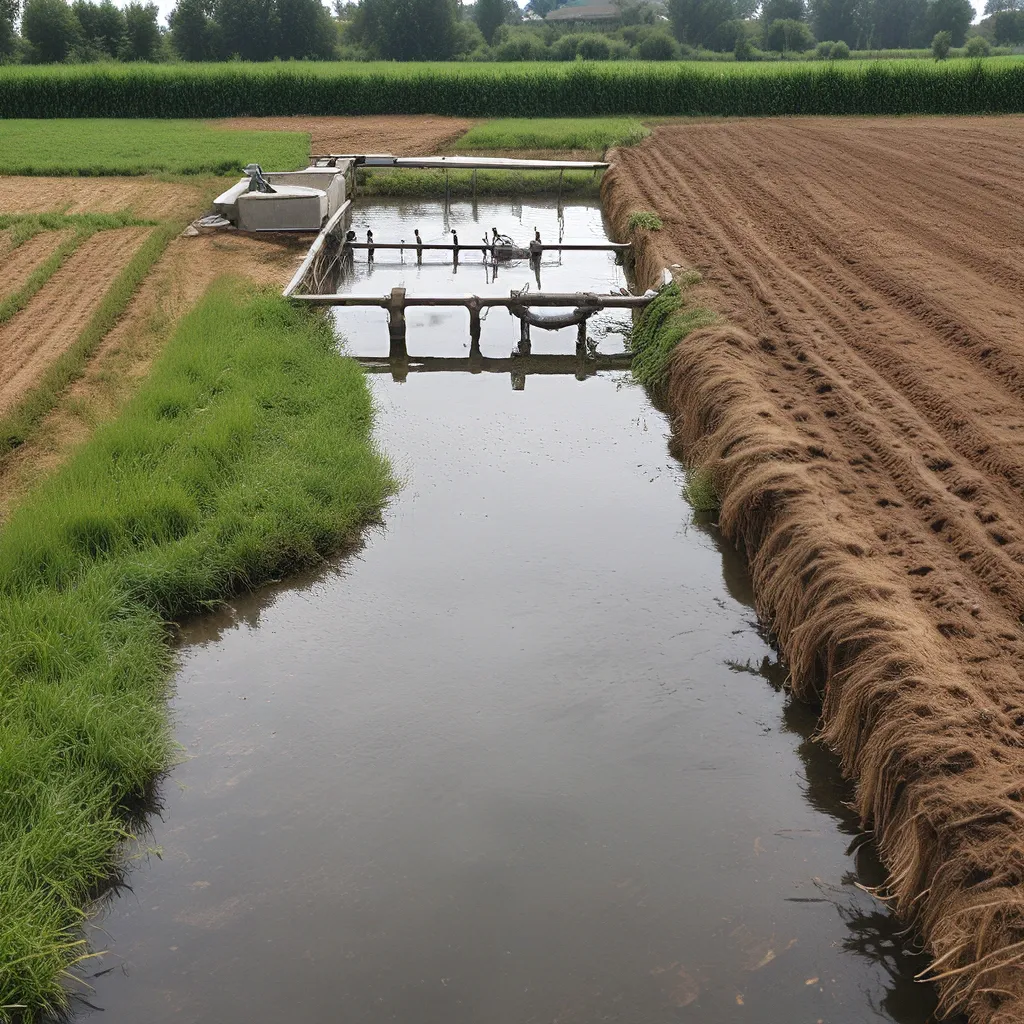
As an environmental enthusiast, I’ve long been fascinated by the incredible potential of wastewater to serve as a vital resource for sustainable fertilizer production. This comprehensive exploration of the recovery chain – from technology to final product reuse – has opened my eyes to the transformative power of innovative wastewater management practices.
Unlocking the Nutrient Treasure Trove
One of the most exciting aspects of this topic is the recovery of nitrogen (N) and phosphorus (P) from wastewater. These essential nutrients play a crucial role in supporting plant growth, making them indispensable for agricultural applications. By tapping into this underutilized nutrient goldmine, we can not only reduce our reliance on synthetic fertilizers but also contribute to the development of a more circular economy.
Cutting-edge research has revealed that biomass growth is the most cost-effective method for valorizing up to 95% of these nutrients. However, as with any innovative approach, we must navigate some intriguing safety concerns. Fortunately, a diverse array of techniques have emerged that enable the recovery of 100% of phosphorus and up to 99% of nitrogen.
Overcoming Technical Challenges
While the potential for nutrient recovery from wastewater is undeniable, the journey is not without its obstacles. One of the primary challenges lies in the crystallization of the final products, particularly when dealing with the high solubility of ammonium salts. But this is where the ingenuity of researchers and engineers truly shines.
Chemical precipitation and ammonia stripping/absorption have already achieved full commercialization, with estimated recovery costs that are surprisingly cost-effective. Moreover, multiple technologies integrating biomass thermo-chemical processing and P and/or N recovery have reached an impressive technology readiness level (TRL) of 9.
However, the journey doesn’t end there. The non-homogenous nature of wastewater introduces a unique challenge, as impurities can find their way into the nutrient recovery products. While some impurities, such as calcium and iron, may impact the bioavailability of the final product, certain full-scale P recovery technologies have managed to deliver products containing this admixture.
Embracing the Circular Economy
One of the most remarkable findings from this research is the superior performance of recovered mineral nutrient forms compared to synthetic fertilizers. These wastewater-derived products have demonstrated up to 60% higher yield in biomass growth, underscoring their immense potential for revolutionizing agricultural practices.
Interestingly, life cycle assessment studies have confirmed the positive environmental outcomes of this nutrient recycling process, from wastewater to agricultural applications. This is a testament to the power of embracing a circular economy mindset, where waste becomes a valuable resource.
Unlocking the Holistic Potential
While the integration of novel technologies may result in a slight increase in wastewater treatment costs, the benefits far outweigh the drawbacks. Renewable energy utilization and the sale of recovered products can help offset these costs, making the whole system more economically viable.
Moreover, the simultaneous nutrient recovery and energy production through bio-electrochemical processes contribute to the pursuit of carbon neutrality, aligning with the global drive towards sustainability.
Interdisciplinary Collaboration: The Key to Success
To truly harness the full potential of integrated wastewater management for agricultural applications, interdisciplinary cooperation is essential. By bridging the expertise of various fields, we can address both the energy and chemical inputs, increase cost-efficiency, and optimize technologies.
Furthermore, understanding the nutrient release patterns of wastewater-derived products on different crops is crucial for maximizing their effectiveness and ensuring seamless integration into agricultural practices.
Overcoming Non-Technical Barriers
While the technological advancements are undoubtedly impressive, it’s important to recognize that the successful implementation of integrated wastewater management goes beyond just technical solutions. Addressing non-technological factors, such as legal and financial support infrastructure redesign and market-readiness, is equally crucial.
Navigating the evolving regulatory landscape for waste-derived products and ensuring their commercial availability is a critical piece of the puzzle. Collaboration with policymakers, industry leaders, and end-users will be instrumental in overcoming these barriers and unlocking the full potential of this innovative approach.
Embracing the Future of Sustainable Agriculture
As I delve deeper into this fascinating topic, I can’t help but feel a sense of excitement and optimism for the future of sustainable agriculture. The integration of wastewater management into the agricultural ecosystem holds the promise of transforming the way we approach food production, reducing our environmental footprint, and contributing to the global effort towards food security and sustainability.
While there may still be some uncertainties and ongoing research in certain areas, the overall trajectory is clear: integrated wastewater management is poised to play a pivotal role in shaping the future of agricultural practices. By embracing this holistic approach, we can unlock new possibilities, drive positive environmental outcomes, and contribute to the creation of a more resilient and sustainable food system.
As you explore the services offered by Alpha Wastewater, I encourage you to keep this comprehensive understanding of integrated wastewater management in mind. Together, we can forge a path towards a more circular, resource-efficient, and environmentally conscious future for agriculture.